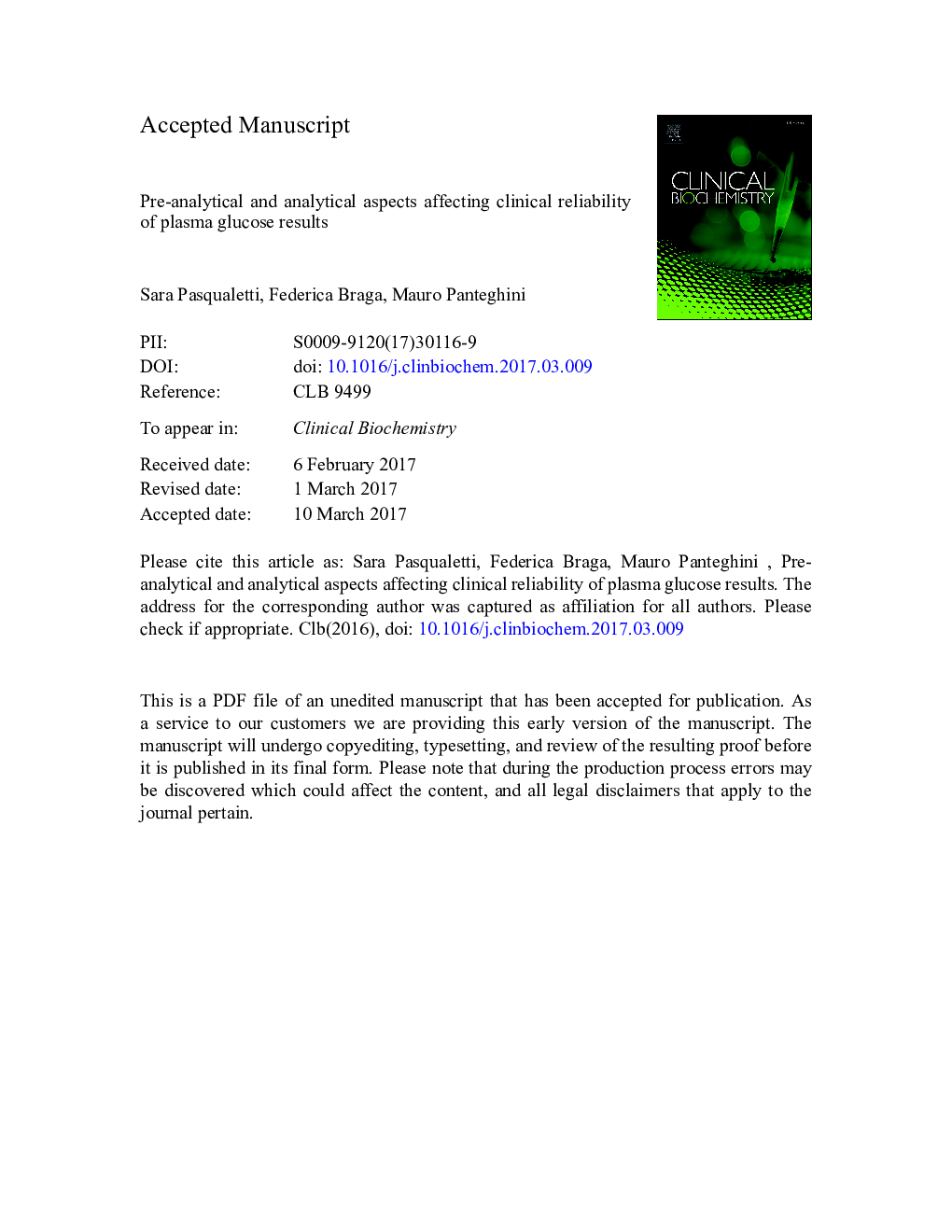| Article ID | Journal | Published Year | Pages | File Type |
|---|---|---|---|---|
| 5510208 | Clinical Biochemistry | 2017 | 26 Pages |
Abstract
The measurement of plasma glucose (PG) plays a central role in recognizing disturbances in carbohydrate metabolism, with established decision limits that are globally accepted. This requires that PG results are reliable and unequivocally valid no matter where they are obtained. To control the pre-analytical variability of PG and prevent in vitro glycolysis, the use of citrate as rapidly effective glycolysis inhibitor has been proposed. However, the commercial availability of several tubes with studies showing different performance has created confusion among users. Moreover, and more importantly, studies have shown that tubes promptly inhibiting glycolysis give PG results that are significantly higher than tubes containing sodium fluoride only, used in the majority of studies generating the current PG cut-points, with a different clinical classification of subjects. From the analytical point of view, to be equivalent among different measuring systems, PG results should be traceable to a recognized higher-order reference via the implementation of an unbroken metrological hierarchy. In doing this, it is important that manufacturers of measuring systems consider the uncertainty accumulated through the different steps of the selected traceability chain. In particular, PG results should fulfil analytical performance specifications defined to fit the intended clinical application. Since PG has tight homeostatic control, its biological variability may be used to define these limits. Alternatively, given the central diagnostic role of the analyte, an outcome model showing the impact of analytical performance of test on clinical classifications of subjects can be used. Using these specifications, performance assessment studies employing commutable control materials with values assigned by reference procedure have shown that the quality of PG measurements is often far from desirable and that problems are exacerbated using point-of-care devices.
Keywords
HbA1cPOCTCVGEQApre-analytical variationIVDCLSICVPGDMFDAIFGCegCVIEQASCVAAPsImpaired fasting glucoseexternal quality assessmentStandardizationAmerican Diabetes AssociationPoint-of-care testingIn vitro diagnosticsanalytical variationBiological variationtotal errorGestational diabetes mellitusWorld Health OrganizationFood and Drug AdministrationUncertaintyFalse positivesFalse negativesClinical and Laboratory Standards InstituteHAPOglycated haemoglobinADAWHOGlucosePlasma glucose
Related Topics
Life Sciences
Biochemistry, Genetics and Molecular Biology
Biochemistry
Authors
Sara Pasqualetti, Federica Braga, Mauro Panteghini,
